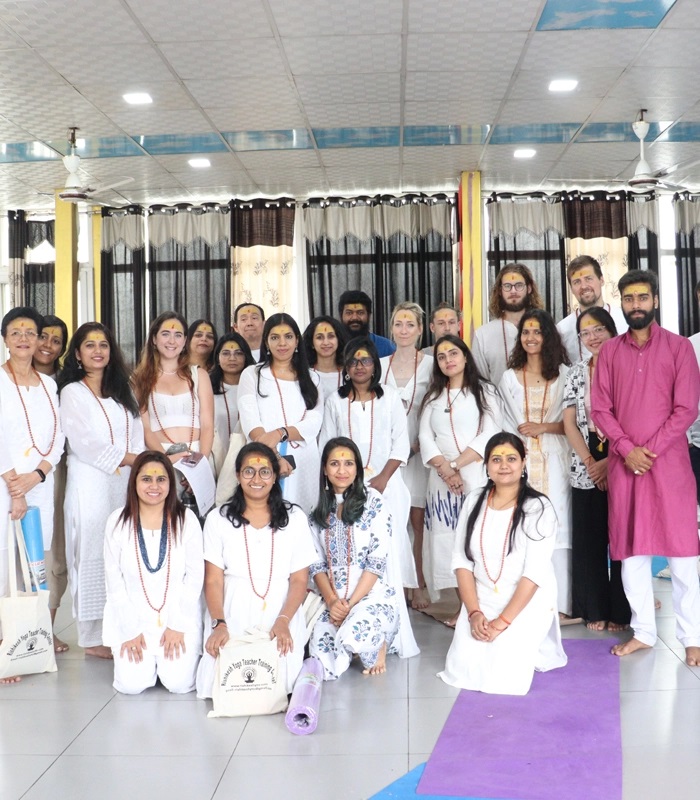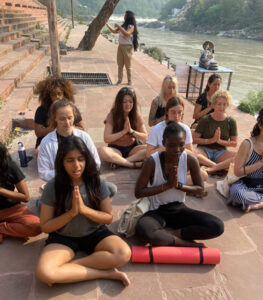Rishikesh 200 Hour YTT: Curriculum and Daily Schedule
Embarking on a 200 Hour Yoga Teacher Training in Rishikesh is more than a certification course—it is a life-changing journey...

Embarking on a 200 Hour Yoga Teacher Training in Rishikesh is more than a certification course—it is a life-changing journey that blends ancient yogic wisdom with structured learning. Nestled in the lap of the Himalayas and alongside the sacred Ganges River, Rishikesh offers a spiritually rich environment that elevates the yoga training experience. With its serene ambiance, vibrant ashram culture, and legacy of authentic yoga practices, Rishikesh is considered the Yoga Capital of the World and a top destination for aspiring yoga teachers.
If you are considering enrolling in a 200 Hour YTT in Rishikesh, it’s essential to understand the curriculum and daily schedule. This article provides an in-depth look at what you can expect during your training—covering core subjects, learning methodology, and how each day is structured to support your transformation.
Overview of the 200 Hour YTT in Rishikesh
The 200 Hour YTT is the foundational course for yoga teachers recognized by the Yoga Alliance USA, making it globally valid. This program is ideal for beginners and intermediate practitioners who wish to:
- Deepen their personal practice
- Understand yoga philosophy and anatomy
- Learn how to structure and teach yoga classes
- Experience a yogic lifestyle in an immersive environment
In Rishikesh, the 200 Hour YTT curriculum follows the traditional lineage of Hatha Yoga, often integrated with Ashtanga Vinyasa, Pranayama, Meditation, and Ayurveda. The learning environment is highly disciplined yet nurturing, offering a perfect balance of theory and practice.
Key Components of the Curriculum
The curriculum of a 200 Hour YTT in Rishikesh is comprehensive and designed to provide a deep understanding of the yogic path. It is generally divided into six main modules:
1. Asana Practice (Yoga Postures)
Daily asana classes form the foundation of the training. You’ll learn about the alignment, benefits, contraindications, and modifications of key postures.
- Hatha Yoga: Focuses on holding poses and alignment
- Ashtanga Vinyasa: A structured series of postures with breath synchronization
- Vinyasa Flow: Linking movements with breath in a fluid sequence
Students also explore counterposes, props usage, and how to build a balanced sequence for various levels.
2. Pranayama (Breath Control)
Breathwork is a cornerstone of yogic discipline. You’ll be introduced to powerful techniques that regulate prana (life force), including:
- Nadi Shodhana (Alternate nostril breathing)
- Bhastrika (Bellows breath)
- Kapalabhati (Cleansing breath)
- Ujjayi (Victorious breath)
- Bhramari (Humming bee breath)
These practices improve lung capacity, mental focus, and emotional stability.
3. Meditation and Mantra
Meditation sessions are conducted daily to help calm the mind and promote self-awareness. Techniques may include:
- Mindfulness meditation
- Chakra and Kundalini meditation
- Trataka (Candle gazing)
- Yoga Nidra (Yogic sleep)
You’ll also learn to chant traditional Sanskrit mantras, including the Gayatri Mantra, Om chanting, and healing vibrations that purify the mind and heart.
4. Yoga Philosophy and Ethics
This module introduces you to the ancient texts and principles that form the philosophical foundation of yoga. Key topics include:
- Patanjali’s Yoga Sutras
- Bhagavad Gita teachings
- The concept of the 5 koshas (layers of being)
- The 8 limbs of yoga (Ashtanga Yoga)
- Yamas and Niyamas (ethical precepts)
Understanding these principles deepens your spiritual journey and guides you in becoming a mindful, ethical teacher.
5. Anatomy and Physiology
Anatomy classes are essential to practicing and teaching yoga safely. You’ll study:
- Skeletal and muscular systems
- Respiratory and nervous systems
- Effects of yoga on organs
- Injury prevention and alignment principles
- Energetic anatomy: chakras, nadis, and bandhas
This knowledge bridges the gap between traditional yogic wisdom and modern science.
6. Teaching Methodology and Practicum
This is where you transition from student to teacher. You’ll learn:
- Class structuring and sequencing
- Cueing and voice modulation
- Use of props and hands-on adjustments
- Observation and correction techniques
- Time management and theming classes
You’ll also teach practice classes, receive constructive feedback, and grow confident in your role as a yoga instructor.
Sample Daily Schedule
A typical day during a 200 Hour YTT in Rishikesh is well-structured to provide balance between learning, practice, and rest. Here’s a sample schedule followed by many yoga schools in the region:
| Time | Activity |
|---|---|
| 05:30 AM | Wake-Up Bell |
| 06:00 – 07:00 AM | Pranayama / Shatkarma (Cleansing Practices) |
| 07:00 – 08:30 AM | Hatha Yoga Asana Practice |
| 08:30 – 09:30 AM | Breakfast |
| 10:00 – 11:00 AM | Yoga Philosophy |
| 11:15 – 12:15 PM | Anatomy & Physiology |
| 12:30 – 01:30 PM | Lunch |
| 01:30 – 03:00 PM | Self-Study / Rest |
| 03:00 – 04:00 PM | Teaching Methodology |
| 04:15 – 05:45 PM | Ashtanga / Vinyasa Flow Practice |
| 06:00 – 07:00 PM | Meditation / Mantra Chanting |
| 07:15 – 08:00 PM | Dinner |
| 08:00 – 09:00 PM | Self-Reflection / Silence |
| 09:30 PM | Lights Out |
This disciplined schedule is not only designed to enhance your physical capabilities but also to help develop mental focus and spiritual insight.
Accommodation and Meals
Most yoga schools in Rishikesh provide comfortable, clean accommodations within or near the campus. The food served is typically sattvic (pure vegetarian) and tailored to support your yogic lifestyle.
- Three nutritious meals a day (vegetarian and Ayurveda-inspired)
- Herbal teas and filtered water
- Scenic surroundings to encourage reflection and mindfulness
The simplicity of the environment plays a key role in detoxifying both the body and mind.
Evaluation and Certification
To successfully complete the 200 Hour YTT, students must meet the following:
- Attend all classes and activities
- Demonstrate understanding of practical and theoretical concepts
- Pass a final written and practical teaching exam
- Show personal growth, discipline, and ethical behavior
Upon completion, you receive a Yoga Alliance RYT-200 certification, enabling you to teach yoga anywhere in the world.
Benefits Beyond Certification
While many join the YTT with the intention of becoming certified yoga teachers, the personal transformation during the course is often the most rewarding part. Benefits include:
- Greater body awareness and strength
- Emotional healing and mental clarity
- Improved self-discipline and lifestyle habits
- Deep spiritual connection and sense of purpose
- Lifelong friendships and community
Final Thoughts
A 200 Hour Yoga Teacher Training in Rishikesh is not just an educational program—it is a profound spiritual journey. The combination of disciplined practice, sacred setting, expert guidance, and traditional teachings makes this training truly unique and life-changing. Whether you aspire to become a professional yoga teacher or simply wish to deepen your connection with yoga, Rishikesh offers the perfect environment to begin that journey.
If you’re ready to immerse yourself in yoga’s timeless teachings and emerge transformed, a 200 Hour YTT in Rishikesh is undoubtedly worth the experience.







